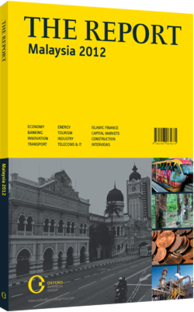Malaysia’s Wall Street: Developing a new financial district in Kuala Lumpur
It may be the initial public offering capital of Southeast Asia and the global hub for Islamic finance, but Malaysia as of yet lacks a clearly defined centre for its banking and capital markets activities, a Wall Street or a City of London equivalent. The various components of the financial industry – the major institutions, the service providers and the vendors – are scattered throughout Kuala Lumpur.
That is set to change by 2016 when the first phase of the Tun Razak Exchange (TRX) is completed. The project, previously known as the Kuala Lumpur International Financial District (KLIFD), is a component of the Economic Transformation Programme and was initiated in 2010. The official launch was in July 2012, and work is now under way on the 28.3-ha site. When the project is finished, the area will become Malaysia’s financial district and, according to the country’s leaders, perhaps something more. They are trying to create a zone that will not only centralise banking and finance, but one that will also act as a catalyst for ancillary activities.
ADVANCED & GREEN: The government wants TRX to be advanced, incorporating the latest technologies in the project’s 26 sustainable buildings and the latest planning concepts in the open spaces. A full 30% of the site will be green. The park-like setting is designed to limit traffic and create an environment that is not only clean and healthy, but also attractive to potential tenants, comfortable for employees and conducive to collaboration.
According to the government, optimising the layout and maximising the quality of life at the site will help attract high-quality employees. Officials also believe that the clustering of knowledge and quality employees will result in TRX being a highly productive and creative place. The expectation is that the new banking and capital markets centre will be a “game changer”, Nor Mohamed Yakcop, the minister in the prime minister’s department, told the Malaysian national news agency in August 2012.
DESIGN: In the first stage, three buildings will be constructed on top of a shopping mall, with the design of the “signature tower” being determined in an international competition. The entire 26-building project will be completed over a 15-year period. It is expected that the RM26bn ($8.4bn) district will attract 250 of the world's leading companies and create 500,000 jobs directly and indirectly, of which 40,000 will be knowledge-based.
The massive project, at the southern end of Kuala Lumpur, is being undertaken by 1Malaysia Development, a wholly government-owned company, and Abu Dhabi-based Mubadala Development. Prime Minister Najib Razak sees the TRX – named after his father, the country's second prime minister – as an iconic project that will attract investment both from home and abroad, and one that will help the country to realise its objectives by boosting the technology and service sectors.
TRAFFIC & COSTS: TRX has its critics. Opposition politicians and prominent bloggers have expressed concerns both small and big. Traffic is one worry.
Some observers fear that the project will exacerbate congestion in Kuala Lumpur, and because of that could render the city a less attractive place to live and work. There is also some concern that the real estate market, already facing high vacancy rates in some areas, could be negatively affected.
Others express more substantial criticisms. They believe that the TRX could become a white elephant, like the Multimedia Super Corridor, Bio-Valley and E-Village, other mega-projects with uncertain economic futures. Tony Pua, a member of parliament, argues that the project may not make economic sense and is being made to appear viable with the use of aggressive tax incentives. Developers will be getting a 70% income tax reductions for five years, while companies moving to TRX could receive 100% tax exemptions for a full decade. Doubts have been also been raised about the job creation projections.
You have reached the limit of premium articles you can view for free.
Choose from the options below to purchase print or digital editions of our Reports. You can also purchase a website subscription giving you unlimited access to all of our Reports online for 12 months.
If you have already purchased this Report or have a website subscription, please login to continue.

